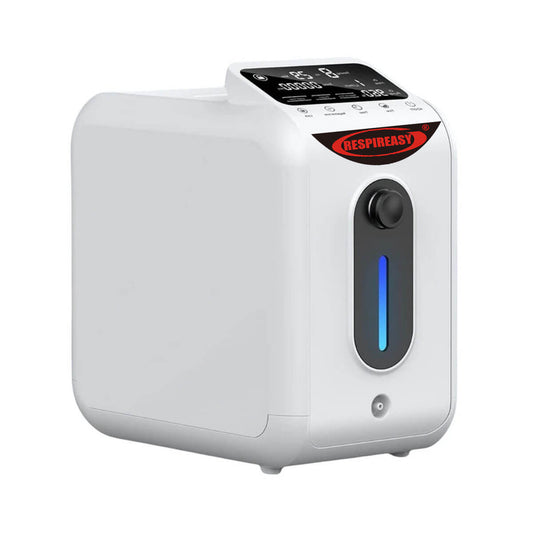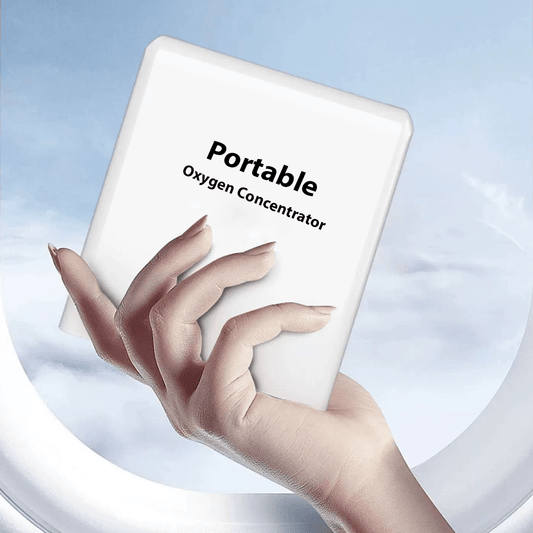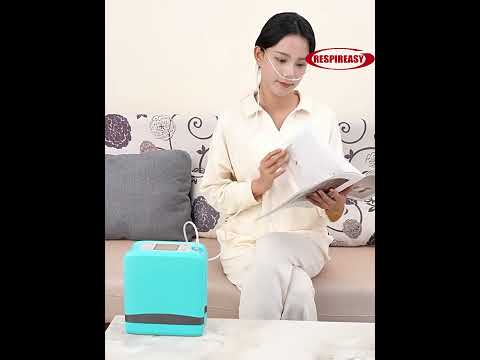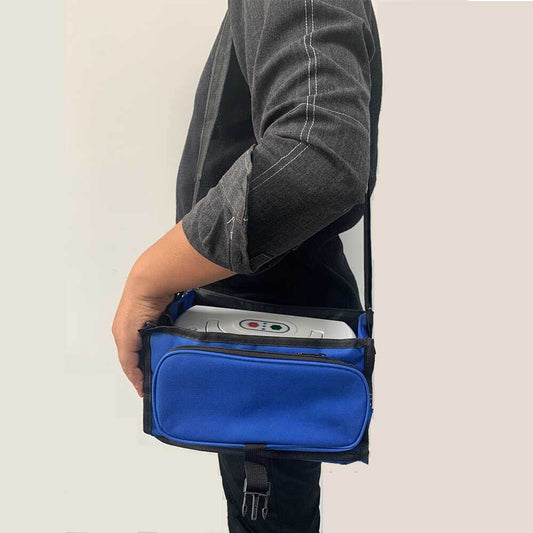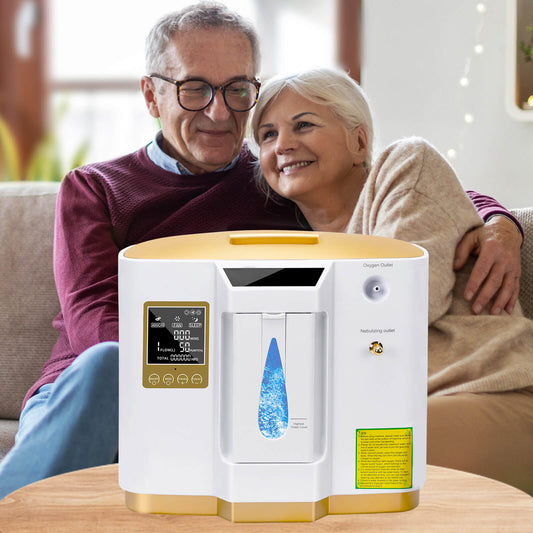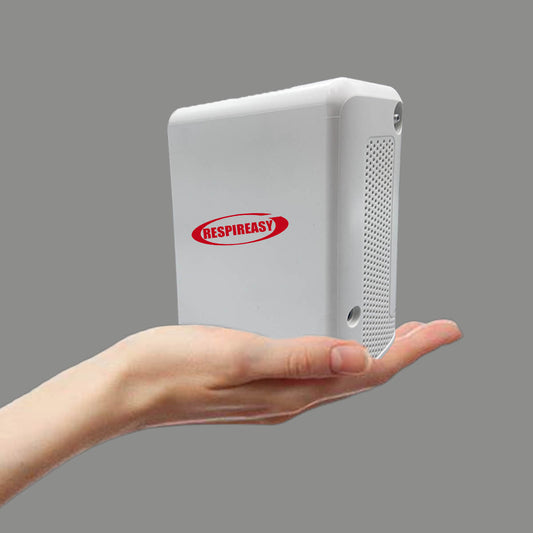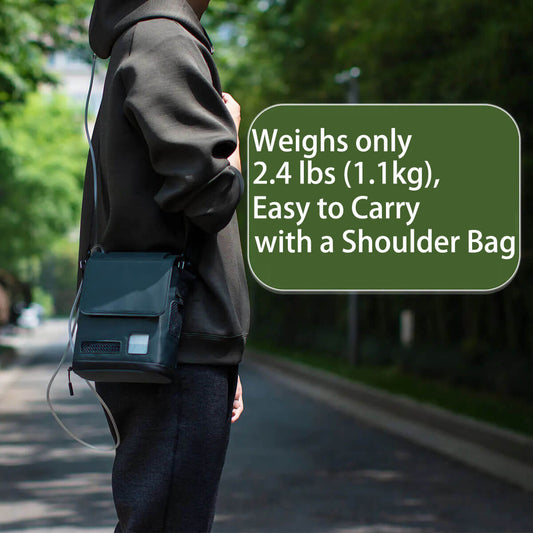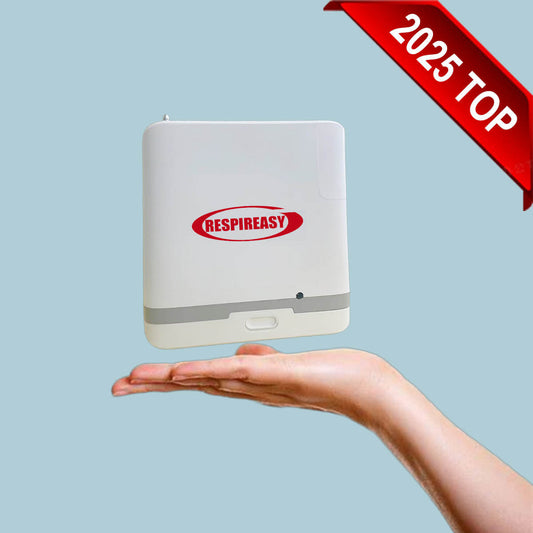Instruction User Manual of Mini Portable Oxygen Concentrator 5L Compact Oxygen Generator
MIni Portable Oxygen Concentrator

Instruction Manual of MINI Portable Oxygen Concentrator

Contents
Glossary of Symbols
Glossary of Symbols
Warnings, Cautions and Contraindications
Contraindications
Warnings
Cautions
Indications for Use
Indications for Use
User Interfaces, Controls
User Controls
User Interfaces
Operating Instructions
Troubleshooting
Cleaning, Care and Maintenance
Cleaning and Care
Filter Cleaning and Replacement
Sieve bed columns Replacement
Service
Storage
Disposal of Equipment and Accessories
Specification
1.Glossary of Symbols
The following table is a list of symbols and definitions that used with the mini portable Oxygen Concentrator.(Used in Car with the adapter)

2.Warnings, Cautions and Contraindications
Contraindications
This equipment is to be used as an oxygen supplement and is NOT INTENDED to be life supporting or life sustaining.
Warnings
1) The device produces concentrated oxygen gas which accelerates combustion. DO NOT USE THE DEVICE WHEN SMOKING OR NEAR OPEN FLAME, MATCHES, PETROLEUM, OIL, GREASE, SOLVENTS, RADIANT HEATERS, AEROSOLS etc. Use only water based lotions or salves that are concentrated oxygen compatible during oxygen therapy.
5) Do not submerge the oxygen concentrator in liquids, expose to liquids, or otherwise allow liquids to enter into the case,this may lead to electrical shock and/or damage. If the oxygen concentrator is exposed to liquids turn it off and unplug from electrical outlet before attempting to clean and dry the liquid spill.
6) Do not use cleaning agents other than those specified in this manual.Always unplug the oxygen concentrator before performing any cleaning.Do not use alcohol, isopropyl alcohol, ethylene chloride, or petroleum based cleaners. This may impair the proper function and/or increase the risk of fire and burns.
7) Do not disassemble the oxygen concentrator or attempt any maintenance other than tasks described in this user manual; disassembly creates a hazard of electrical shock and will void the warranty. Servicing of the concentrator is to be performed by qualified and trained personnel only.
8) Do not use any columns other than those specified in this user manual. The use of non-specified columns may create a safety hazard and/or impair equipment performance and will void the warranty.
9) To avoid danger of choking and strangulation hazard, keep tubing away from children and pets.
10) If you begin to feel ill or are experiencing discomfort while using the oxygen concentrator, consult your health care provider immediately.
Cautions
- This device to sell or rental by or on the order of a physician; may also be applicable in other countries. Under certain circumstances,the use of non- prescribed oxygen therapy can be hazardous.
- Additional monitoring or attention may be required for patients using this device who are unable to hear or see alarms or communicate discomfort. If the patient shows any signs of discomfort, a physician should be consulted immediately.
- Accessories not specified for use with the oxygen concentrator may impair performance. Always use accessories according to manufacturer’s instructions.
- Nasal cannula should be rated 5 liters per minute to ensure proper patient usage and oxygen delivery.
- Replace the nasal cannula on a regular basis. Check with your equipment provider or health care professional to determine how often the cannula should be replaced.
- It is recommended the oxygen concentrator accessory tubing and cannula include a means to reduce the propagation of fire.
- Do not operate the concentrator without the intake filter in place. Particles drawn into the oxygen concentrator may damage the equipment.
- Refer to the environmental range specifications for proper storage and use conditions. Temperatures in excess of the indicated range may cause device malfunction.
- Do not obstruct air intake or exhaust when operating the oxygen concentrator. Blockage of air circulation or proximity to a heat source may lead to internal heat buildup and shutdown or damage. Always maintain a minimum of six inches of clearance.
- Do not place anything in the power supply port other than the supplied wall cord. Avoid the use of electrical extension cords with the concentrator. Do not connect any other device to the same extension cord.
- Do not sit or stand on the concentrator, doing so can be hazardous.
- When the adapter is connected/unplugged or the battery is connected/unplugged, the device will beep "di" , and the main interface of the device will also display relevant information to display the current power supply.
- When an abnormal state occurs,there will be audible&visuable alarm , the device will display abnormal information.
In order to ensure a safe installation and operation of the Oxygen Concentrator, read and understand this entire manual before using the device
The Oxygen Concentrator has a 5 year expected life except 1 year expected life for user serviceable sieve bed columns and rechargeable battery
3.Indications for Use
The Oxygen Concentrator is used on a prescriptive basis by patients requiring supplemental oxygen. It supplies a high concentrationof oxygen and is used with a nasal cannula to channel oxygen from the concentrator to the patient. The Oxygen Concentrator may be used in a home or institution.
4.User Interfaces, Controls
①Flow setting display
②Flow setting control button
③ON/OFF button
④Nozzel fitting
⑤Particle filter
⑥Type C charging port
⑦Lithium battery
⑧Exhaust
⑨Intake filter

(1) User Interfaces

(2)User Controls
ON / OFF Button
Press once to turn “ON”;
Press and hold for three seconds to turn “OFF”.
(3)Flow Setting Control Buttons
Use the – or + flow setting control buttons to select the setting
as shown on the display. There are five settings,from 1 to 5.
5.Operating Instructions
(1) Place the concentrator in a well-ventilated location; air intake
and exhaust must have clear access. Ensure that the
concentrator is at least 6 inches (15 cm.) away from walls,
furniture and curtains that could impede adequate airflow to
the device.
(2) Ensure particle filter is in place.
(3) Ensure intake filter is in place.
(4) Follow instructions as below:
Connecting your nasal cannula tubing to the nozzle fitting.
Nozzle fitting is located on the top of the concentrator. See
Figure 1.
(5) Turn on the concentrator by pressing the ON/OFF button .
See Figure 1.

(6) Use the + or - buttons to adjust the device to the prescribed setting. There are five flow settings, from 1 to 5. The current setting can be viewed on the display. You may begin breathing from the device; the required oxygen concentration is normally reached within 2 minutes after device is powered on.
(7) Ensure that the tubing is not kinked or pinched in any way and that oxygen is flowing through the nasal cannula. Refer to the troubleshooting section of this manual.
(8) Adjust the nasal cannula ,so that it is properly aligned on your face or as directed by your equipment provider.
(9) Turn off concentrator by pressing the ON/OFF button.Turn off the concentrator when not use .
6.Troubleshooting
Contact your equipment provider if you need assistance with the device
7.Cleaning, Care and Maintenance
Cleaning and Care
Periodically you may clean the outside case using a cloth dampened with a mild
liquid detergent and water.
Follow manufacturer’s instructions on cleaning and care of concentrator
accessories; clean or replace these accessories according to your healthcare
provider or respective manufacturer’s instructions for use.
Filter cleaning and replacement
- Turn off the device, clean the particle filter weekly.
- Turn off the device ,disconnect the power supply and remove the battery.
- Take out the intake filter and replace it with a new one
- Take out the intake filter . Note that the intake filter after long time use may absorb and accumulate a lot of dust, please take precautions to avoid dust inhalation while operating.
- Load the new filter in the correct direction.
- Reinstall the cover and insert the battery.


Sieve bed columns replacement
- When the device indicates low oxygen concentration ,the sieve bed columns needs to be replaced, please contact the device provider in time.
- Long-term storage may shorten the lifespan of sieve bed .
- Long-term operation in a humid environment may shorten the lifespan of the sieve bed .
- When the sieve bed is approaching the expiration date, it may cause high internal pressure,big noise, and low oxygen, which affects the performance and normal use of the equipment. Please pay attention to the relevant alarm information such as pressure and concentration .
1.Remove the battery and lift the handle of the molecular sieve
2.Pull the buckle in the direction of the red arrow and pull the handle of the screen drum upward at the same time

4. Fasten the buckle and handle, and insert the battery

Service
The concentrator is specifically designed to minimize routine preventative maintenance.
For assistance,if needed,in setting up,using,maintaining,orreporting unexpected operation or events,contact your equipment provider,orthe manufacturer
Storage
When not use, store indoors away from excessive moisture and temperatures. Storage conditions outside of range specified may result in damage and device malfunction.
Disposal of Equipment and Accessories
Follow your local governing ordinances for disposal and recycling of the concentrator and accessories.
8.Specification
|
Dimensions: |
183 x 86 x 199 mm |
|
Weight: |
1 98kgs |
|
Oxygen Concentration: |
93±3% at all settings |
|
AC Power: |
100-240VAC, 50-60Hz |
|
Environmental Ranges for Use: |
Temperature:- 10 to4040˚C Humidity: ≤ 80% Atmospheric pressure:86- 106Kpa |
|
Environmental Ranges for |
Temperature:- 10 to 40˚C Humidity: ≤ 80% Atmospheric pressure:86- 106Kpa |
|
Outlet pressure |
≤ 120Kpa |
|
Flow Control Settings: |
5 Settings: 1 to 5 settings |
|
Battery running time |
Setting 1≈4.3hours Setting 2 ≈2.96hours Setting 3 ≈2.5hours Setting 4 ≈1.73hours Setting 5 ≈1.5hours |































